The weather’s changing here in Connecticut. Sweaters come out of storage, and sandals and sleeveless shirts are packed away. Light-colored duvets give way to warmer quilts and flannels. Pumpkins appear on porches and shelves, paving the way for twinkling lights in December.
What if we gave our art collections the same seasonal revisit?
The Japanese embrace this idea through a practice called kisetsukan, or “seasonal sense” — an aesthetic and cultural principle deeply rooted in their appreciation of nature and the home. This approach doesn’t just apply to art but extends to festivals, food, clothing, and everyday life. Kisetsukan reflects an awareness of the seasons and their emotional impact — something echoed in many cultures.

Substituting artwork throughout the year can shift one’s emotional response and renew our connection with both the art and the environment around us. A single piece viewed in spring might evoke freshness and renewal; that same piece in the depths of winter could feel nostalgic or even melancholy.
One beautiful example is Paul Furneaux’s City Trees II, City Lights II, a memory of a hidden park in Tokyo where luminous white and pale pink cherry blossoms contrasted against dark-barked pines and the brutalist concrete and glass of the surrounding buildings — a moment of heightened beauty and tension. Works like this could be rotated in and out as the days lengthen or shorten, responding to the mood of the season.

The Benefits of Seasonal Rotation
Rotating your artwork seasonally can:
- Deepen your connection to nature by aligning your interior space with what’s happening outside.
- Enhance appreciation for individual works by seeing them with fresh eyes each time they return.
- Spark reflection on the passage of time and the impermanence of beauty — what the Japanese call mono no aware, a bittersweet awareness of life’s fleeting nature.
- Expand your collection by giving you reason to collect more works and experiment with pairings, contrasts, and themes.
You don’t need to collect four new works for each season to begin. Start small. Instead of grouping similarly sized pieces, try alternating light and dark palettes, or switching black and white for bold color.
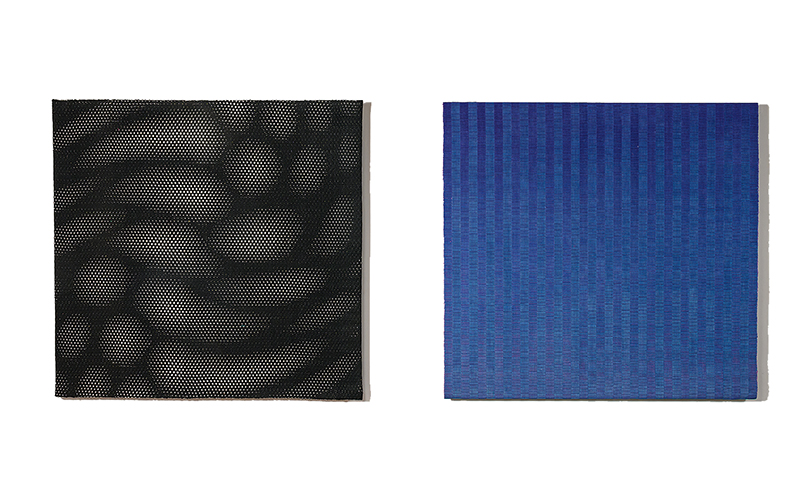

Some pieces even offer built-in versatility:

- Gyöngy Laky’s Deviation — OY can be displayed as “OY” for half the year and flipped to read “YO” for the other. Is it an existential “Oh, Why?” or a cheerful “Yo!” greeting? Let the season decide.

Laura Foster Nicholson’s work Shed can be hung vertically or horizontally, allowing a shift in visual weight and direction.

Sung Rim Park’s Beyond series can be installed on or off the wall, offering new perspectives and levels of engagement.

Lia Cook’s banners, like Big Richard, are impactful whether viewed from the front or reversed — another way to surprise the eye.
The more flexible the installation options, the more enjoyment you may find in your collection. Changing your art throughout the year brings new energy into a space, reawakens your senses, and reminds you of the beauty in change itself.
- Join us at Beauty is Resistance: art as antidote in Wilton, Connecticut through October 19, 2025 to see work by many of these artists. Or at our online walkthrough, Art on the Rocks: an art talkthrough with a twist on November 11 at 7 pm EST (or later on our YouTube channel).

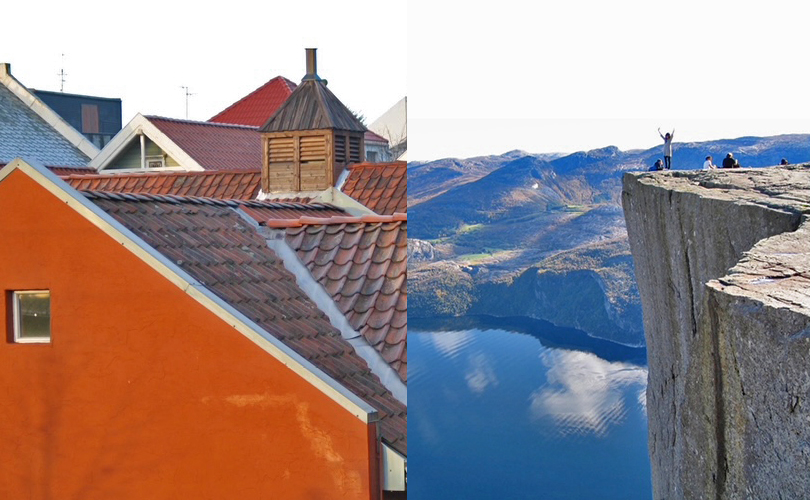

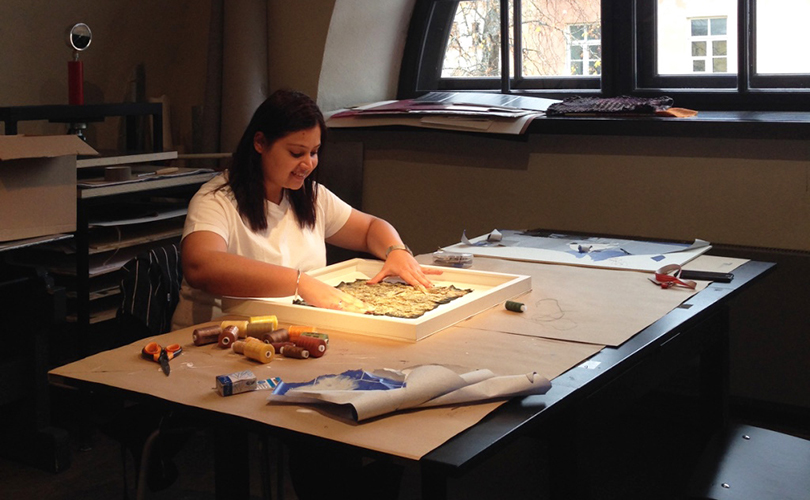





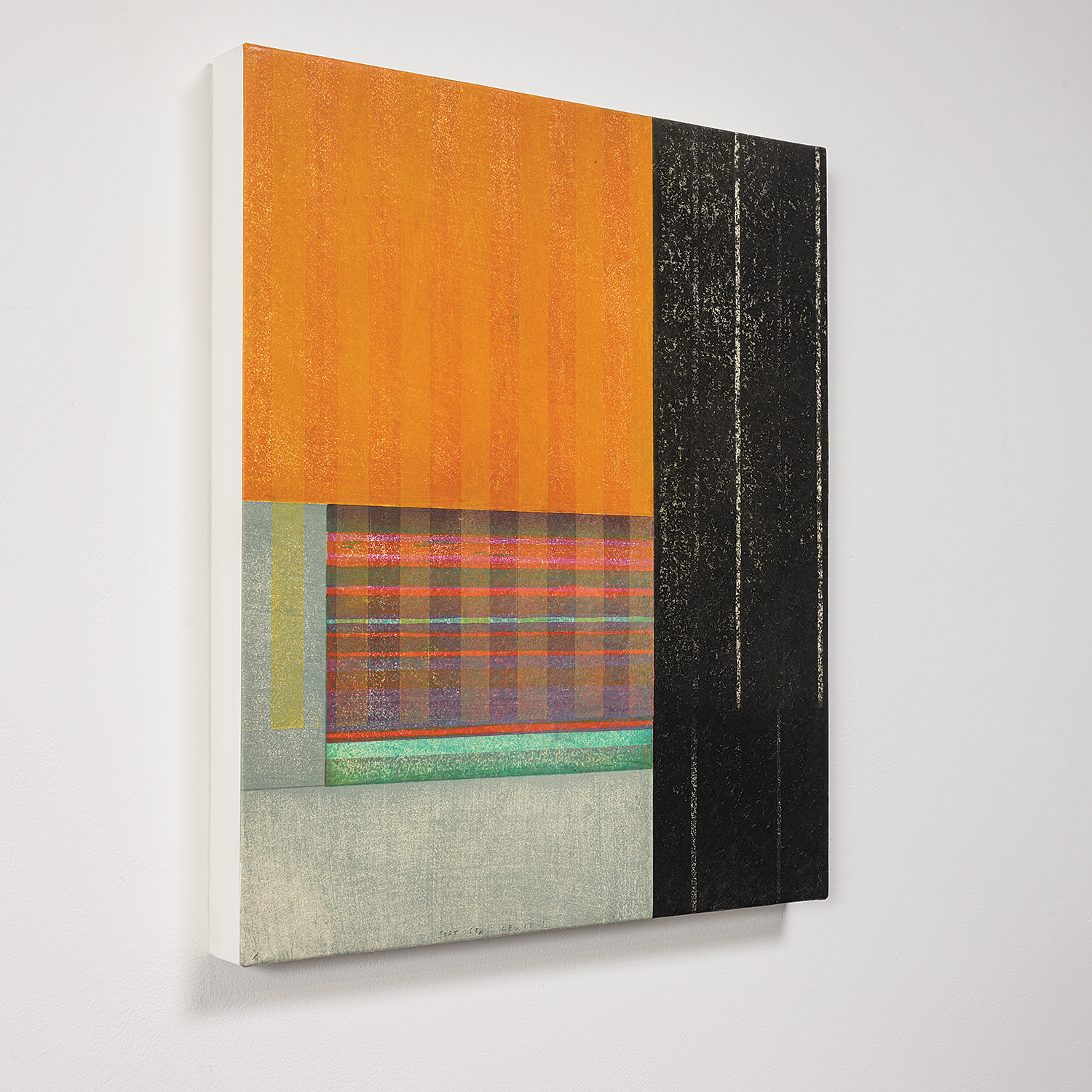

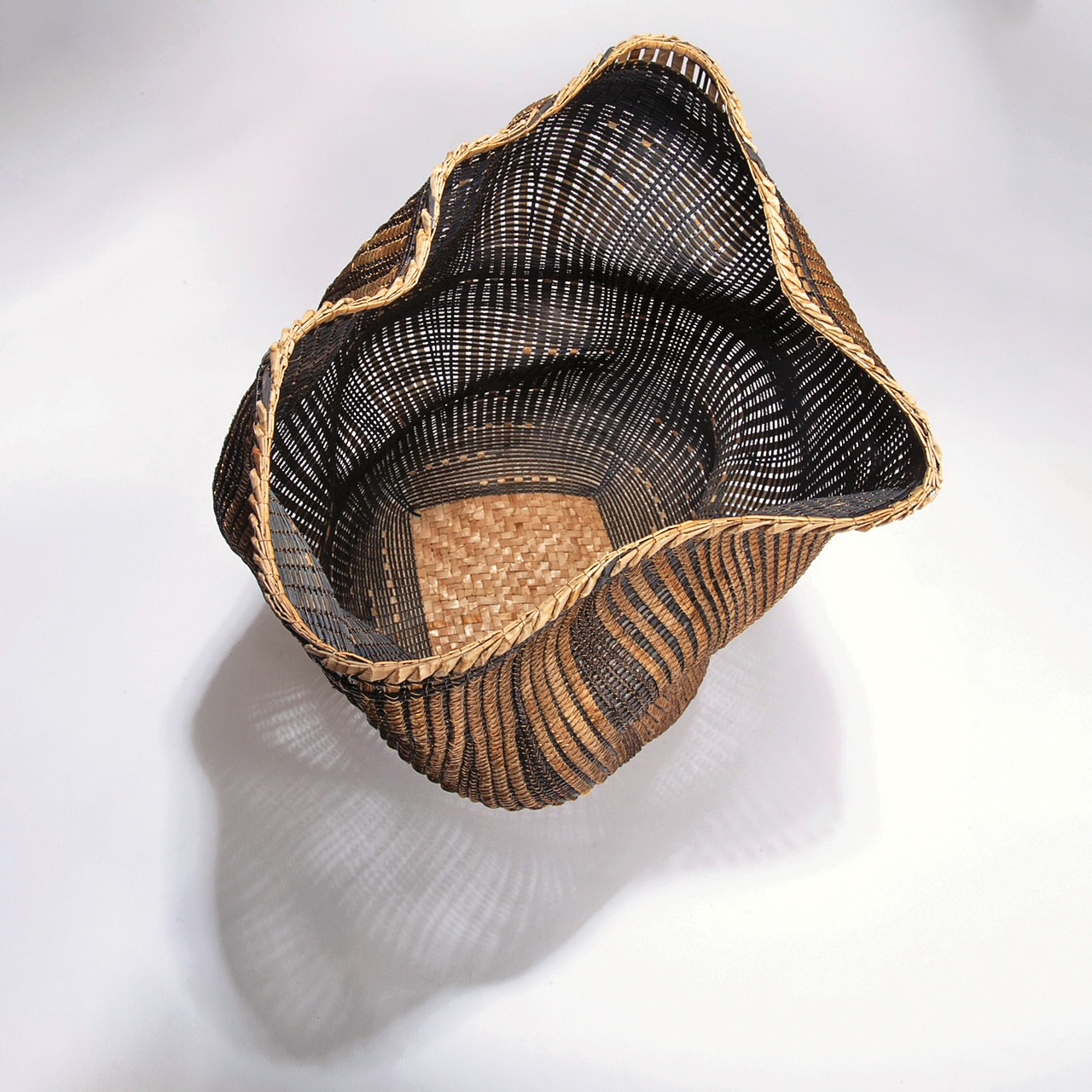


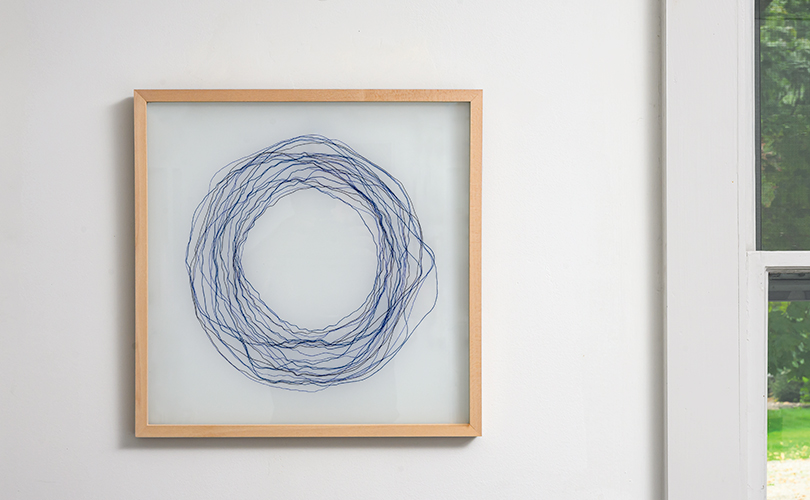

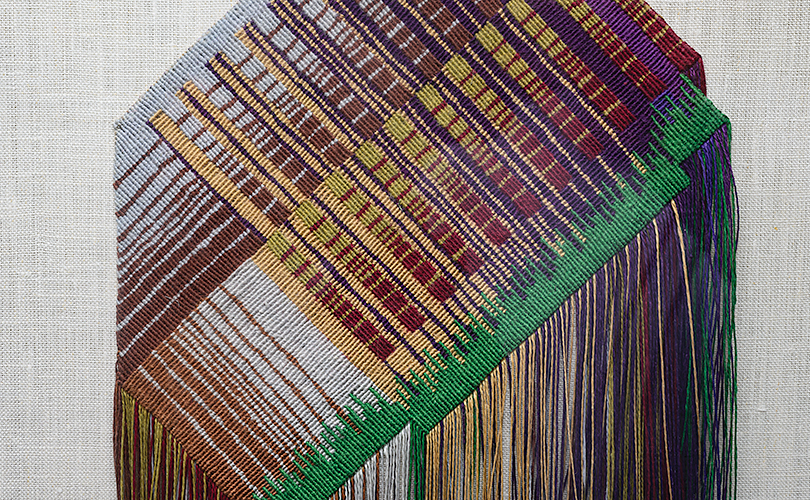



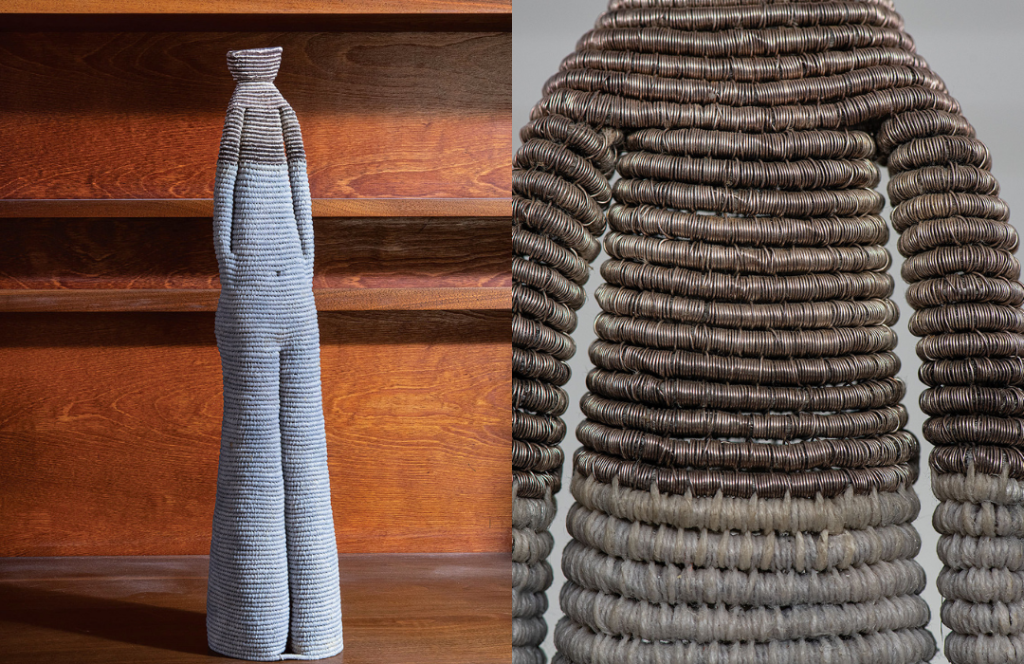



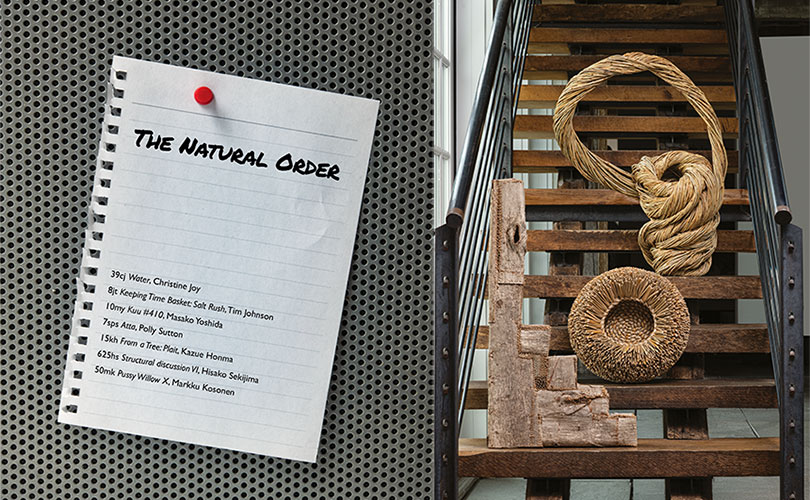


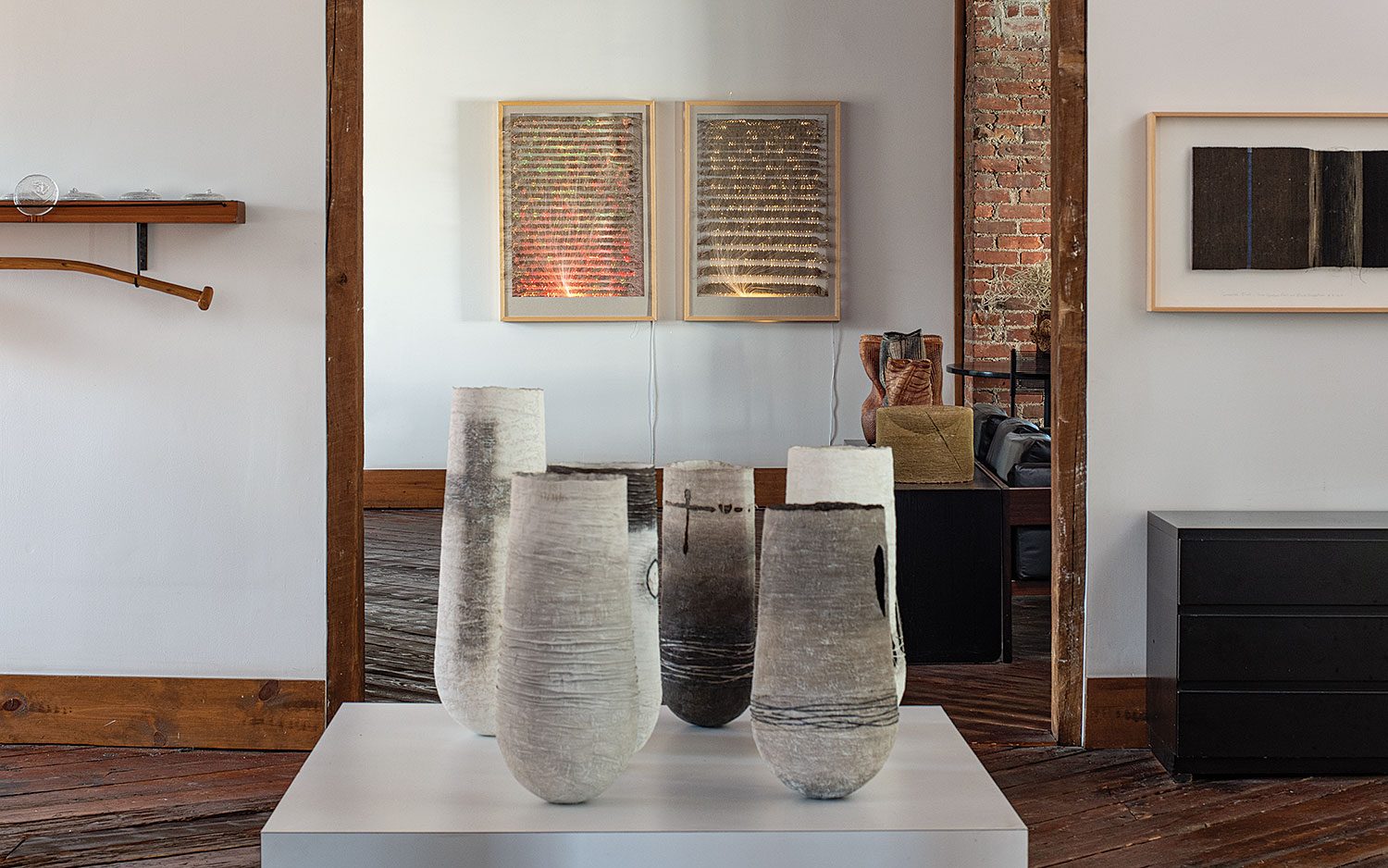




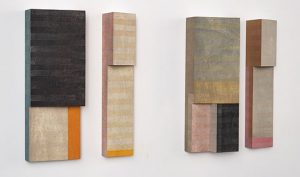
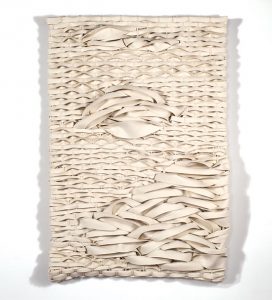
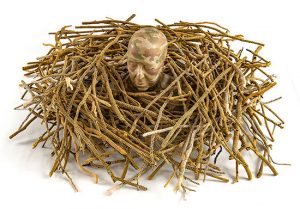
Art & Identity: A Sense of Place
In our 2019 Art in the Barn exhibition, we asked artists to address the theme of identity. In doing so, several of the participants in Art + Identity: an international view, wrote eloquently about places that have informed their work. For Mary Merkel-Hess, that place is the plains of Iowa, which viewers can feel when viewing her windblown, bladed shapes. A recent work made a vivid red orange was an homage to noted author, Willa Cather’s plains’ description, “the bush that burned with fire and was not consumed,” a view that Merkel-Hess says she has seen.
The late Micheline Beauchemin traveled extensively from her native Montreal. Europe, Asia, the Middle East, all influenced her work but depictions of the St. Lawrence River were a constant thread throughout her career. The river, “has always fascinated me,” she admitted, calling it, “a source of constant wonder” (Micheline Beauchemin, les éditions de passage, 2009). “Under a lemon yellow sky, this river, leaded at certain times, is inhabited in winter, with ice wings without shadows, fragile and stubborn, on which a thousand glittering lights change their colors in an apparent immobility.” To replicate these effects, she incorporated unexpected materials like glass, aluminum and acrylic blocks that glitter and reflect light and metallic threads to translate light of frost and ice.
Mérida, Venezuela, the place they live, and can always come back to, has been a primary influence on Eduardo Portillo’s and Maria Davila’s way of thinking, life and work. Its geography and people have given them a strong sense of place. Mérida is deep in the Andes Mountains, and the artists have been exploring this countryside for years. Centuries-old switchback trails or “chains” that historically helped to divide farms and provide a mountain path for farm animals have recently provided inspiration and the theme for a body of work, entitled Within the Mountains. Nebula, the first work from this group of textiles, is owned by the Cooper Hewitt Museum.
Birgit Birkkjaer’s Ode for the Ocean is composed of many small woven boxes with items from the sea — stones, shells, fossils and so on — on their lids. ” It started as a diary-project when we moved to the sea some years ago,” she explains. “We moved from an area with woods, and as I have always used materials from the place where I live and where I travel, it was obvious I needed now to draw sea-related elements into my art work.”
“I am born and raised in the Northeast,” says Polly Barton, “trained to weave in Japan, and have lived most of my life in the American Southwest. These disparate places find connection in the woven fabric that is my art, the internal reflections of landscape.” In works like Continuum i, ii, iii, Barton uses woven ikat as her “paintbrush,” to study native Southwestern sandstone. Nature’s shifting elements etched into the stone’s layered fascia reveal the bands of time. “Likewise, in threads dyed and woven, my essence is set in stone.”
For Paul Furneaux, geographic influences are varied, including time spent in Mexico, at Norwegian fjords and then, Japan, where he studied Japanese woodblock, Mokuhanga “After a workshop in Tokyo,” he writes, “I found myself in a beautful hidden-away park that I had found when I first studied there, soft cherry blossom interspersed with brutal modern architecture. When I returned to Scotland, I had forms made for me in tulip wood that I sealed and painted white. I spaced them on the wall, trying to recapture the moment. The forms say something about the architecture of those buildings but also imbue the soft sensual beauty of the trees, the park, the blossom, the soft evening light touching the sides of the harsh glass and concrete blocks.”